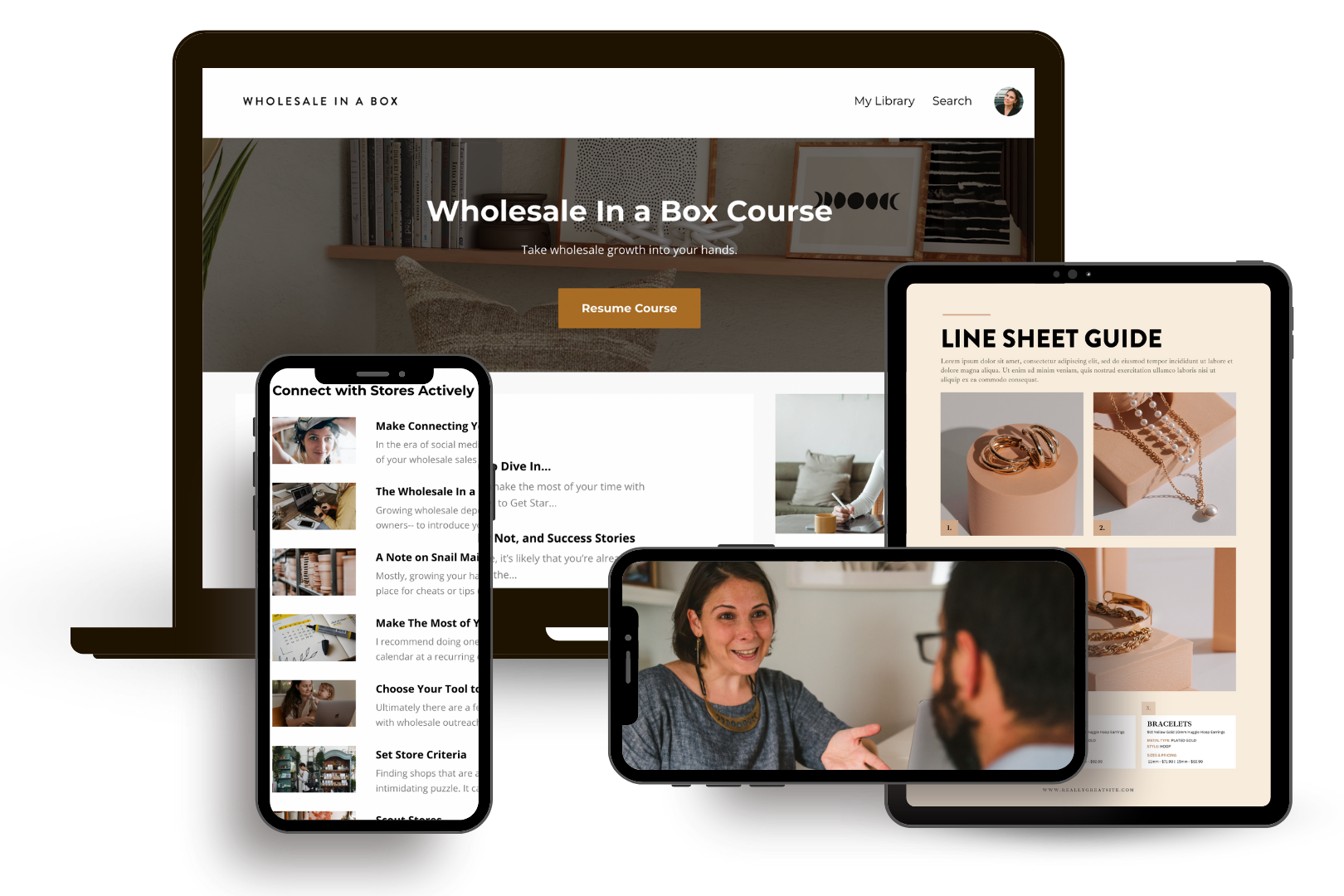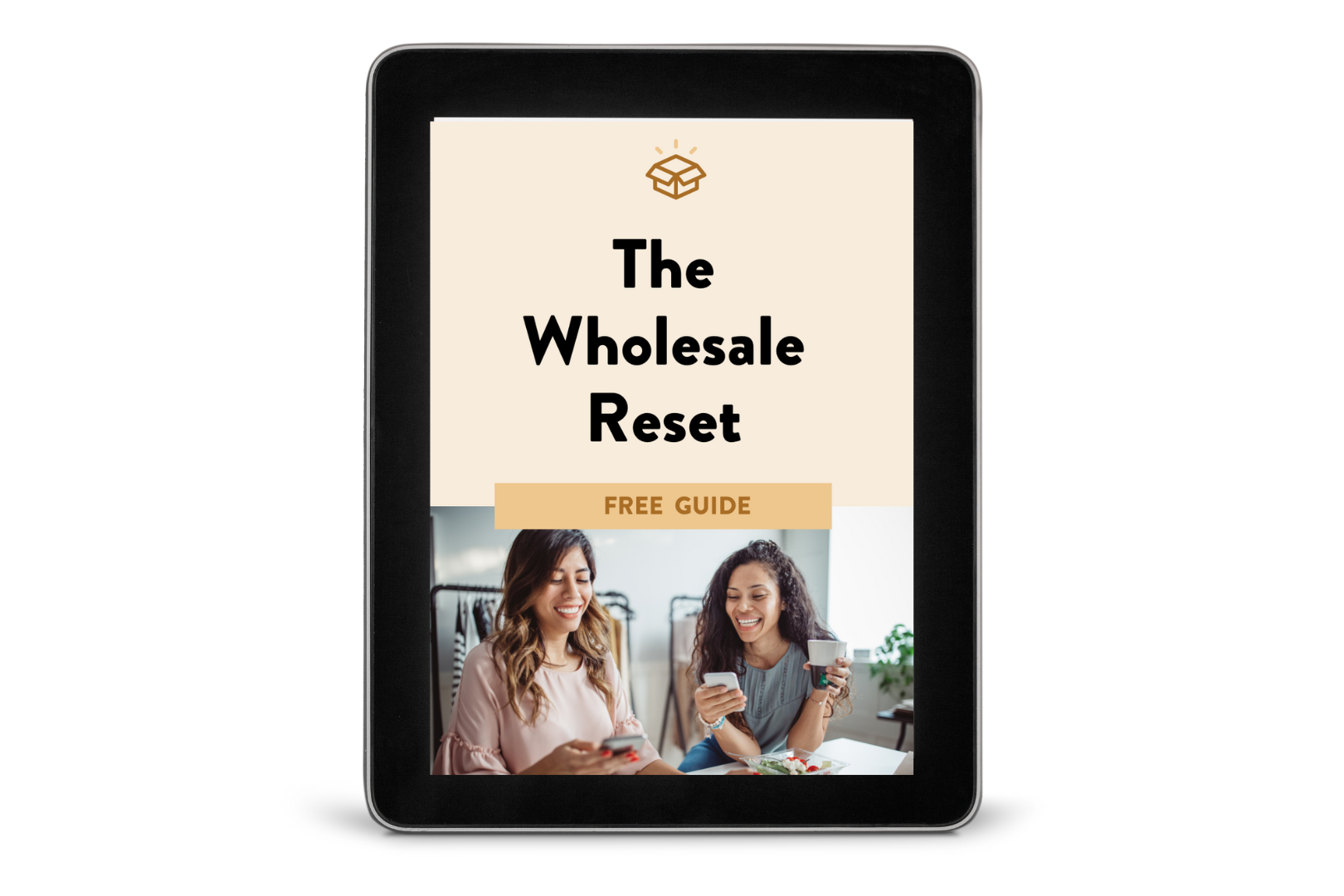What To Do When A Wholesale Marketplace Closes
As many of you know, the online wholesale marketplace landscape is ever changing. It seems like a new marketplace opens every 6 months.
When marketplaces change focus or shut down, we know brands and makers can be left frustrated, scrambling, and wary of joining yet another marketplace. Which is why we put together some tips on how to move forward and continue your wholesale journey, even when a marketplace closes.
What To Do When a Wholesale Marketplace Closes
Take a Breath.
When unexpected changes happen, blindly reacting to what feels like an urgent situation can lead to making poor decisions or a flawed execution. And neither is ideal for a small business owner. Which is why the best thing you can do when you are blindsided is to stop, take a breath, and consider what this actually means for you and your business. Rushing to sign-up for an expensive trade show that you can’t afford or blindly jumping straight onto another wholesale platform is not the answer. Instead, think about your other wholesale options, how/when is this change happening and how does this factor into your short and long-term business goals?
Gather Stockist Information.
If you haven’t already, capture all the information you can from the closing wholesale marketplace website. Critical pieces to document are things like contact person(s), retailer names, websites and contact information. Once you have the contact info, you can consider also grabbing historical data: things like order dates, frequency, product specifics, and payment types. If the marketplace interface does not allow for direct downloads, you can use screenshots and manually transfer information to a spreadsheet or tracker.
A great practice is to save this type of information in your own records as the orders occur so that no matter which marketplace or wholesale strategy you use, you will always have access to all your contact information, customer preferences, and order history in one place for easy reference and analysis.
Connect With Your Stockists.
One of the cons of utilizing online wholesale marketplaces is that some restrict communications to their platform. And while there are ways to get around that on some sites (more on that here), taking ownership of the relationships with your stockists is the best way to weather the storms of marketplace pivots and shutdowns.
After a marketplace announces a transition or closure, makers are not the only ones affected. Retailers are also thrown into a spin and left hunting for how and where to stock their stops. Be proactive by reaching out to your existing stockists. While you can put a post on social media, you should continue to nourish the relationships you have already built, by reaching out to each store individually. You can create a basic email template and tailor the details to fit each store you contact. Include information like how and where to order moving forward, answers to commonly asked questions and any new items as a great way to keep stockists coming back. Consider including a “direct” link to a different wholesale marketplace that you are already participating in that will provide you zero or reduced commission rates or special sign-up offers (i.e. Faire).
Use a Strategy (Not a Substitute).
When a marketplace closes, it’s natural to want to immediately swap in a substitute. But the closure can be a good moment to consider your strategy more broadly (only adding another marketplace if it really makes sense).
“Don’t put all your eggs in one basket” pertains to your wholesale strategy, too. Relying solely on one online wholesale marketplace can leave you with peaks and valleys of income. A more sustainable approach is to explore the alternatives and experiment with what works for you. Options to consider include the many online wholesale marketplaces out there, as well as trade shows, physical marketplaces, personal outreach, or a mixture. (You may find this article helpful when considering your options: How To Compare And Choose The Right Wholesale Marketplace For You.)
You may also consider making your non-marketplace strategy more robust. For instance:
Consider the fact that your own website can remain a constant no matter which wholesale options you pursue… and time spent building that asset can be well placed. If you already have a retail website, then you can either provide a 50% coupon code (assuming this is your markup) to retailers that requires a minimum order. On the flipside you can create a password protected storefront for retailers with wholesale prices, where you can provide your wholesale terms. (This article will help you get started: Creating a Wholesale Website.) If all of that is too complicated, making a website where retailers can view your product line and wholesale terms before contacting you directly via phone or email to place an order is another alternative.
If you’re looking for a simple way to present your product lineup, consider a PDF line sheet. (Psst… Did you know that Wholesale In a Box offers a free Wholesale Line Sheet Template when you sign-up for the Wholesale In a Box Course? You can read all about it in the article: Introducing… Our Line Sheet Template!) And this is something you can provide via email or have on hand for stores to peruse and order from.
Establish your payment and invoicing. Getting paid is important and you want to make it as easy as possible for retailers to place and pay for their orders. It doesn’t have to be fancy, you can get started using services like Paypal, Venmo, or Square to accept payment on your website or in-person.
Button up your wholesale terms. One of the perks of using online wholesale marketplaces is that many of them offer terms that you may not be able to alone. And if you’re considering that, read this article Offering net 30 terms - a scary reality (and some helpful tips! Wholesale terms include payment and ordering information, minimum orders, turnaround time, sizing and materials and so much more. So make sure that you have all this information handy on your preferred product presentation method before moving to our next tip.
Start proactively reaching out to retail shops. This is not a suggestion to start spamming every big box store in your region. Instead, take the time to research and identify stores that fit with your product line and contacting those stores with tailored and thoughtful outreach is a much more impactful strategy. If you’re looking for ways to get started with this method the Wholesale In a Box Course goes into depth on this and many more wholesale specific topics. And some free resources include our Free Wholesale Training Courses and the Wholesale In a Box Training Center.
Use your resources.
There are a lot of great resources that can support you during this transition. Here are a few of our favorites…
The Wholesale In a Box Course has an entire module dedicated to online marketplaces and Faire algorithm optimization. Learn more here.
Aeolidia's support for makers who are creating new wholesale sites, including how to set up wholesale ordering on Shopify, how to decide whether you need a wholesale site, and their paid design services.
These relevant Wholesale In a Box articles:
How We Can Help You Grow Wholesale:
Wholesale In a Box
Our beloved comprehensive course and coaching is your all-in-one way to grow wholesale fast, steady, and long-term. Learn more here.
Getting Started With Wholesale
A free 4-part email course covering the basics of how wholesale works, keys for success, whether it’s right for you, and how to get started. Sign up here.
The Wholesale Reset
Our free email course for more advanced brands — we’ll help you reset your approach to wholesale and take concrete steps forward to change your results. Sign up here.



